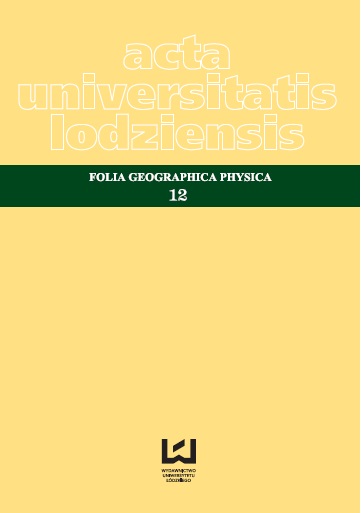Jeziorna przeszłość torfowisk regionu łódzkiego
Limnic past of peatlands in the Łódź Region
Author(s): Jacek ForysiakSubject(s): Environmental Geography
Published by: Wydawnictwo Uniwersytetu Łódzkiego
Keywords: lake deposits; peatland; Late Vistulian; Holocene; Central Poland
Summary/Abstract: Studies of infills of present-day peatland basins of the Łódź Region revealed the presence of lacustrine sediments underlying peats. They usually rest on mineral bottoms of basins, and their accumulation began in the Late Vistulian and continued in the Holocene. Out of 17 objects subjected to geological and palaeoecological examinations such arrangement was found in 8 of them. In the locality of the Żabieniec peatland 16.4 m of biogenic sediments was documented. The essential part of the profile contains detrital gyttja (at the bottom – detrital-clay gyttja, above – fine detrital gyttja). Within the Ner-Zawada peatland the thickness of biogenic sediments is 4.70 m and lake sediments are represented by clay-calcareous gyttja and calcareous gyttja. The thickness of biogenic sediments in the Ługi peatland reaches to 2.90 m. At this locality detrital- calcareous gyttja and detrital gyttja accumulated on the mineral substratum. In the Rąbień peatland basin the thickness of lacustrine sediments and peat reaches 6.2 m; on sandy bottom rest detrital-clay gyttja and detrital gyttja. In the Silne Błoto-Witów peatland only the 3.5 m long profile of the so-called “west island” contains lacustrine deposits covered by herbaceous peat. In the bottoms of a few other peatlands of the region, biogenic lake deposits were found, but their thickness is small (such as Korzeń, Bęczkowice, Parchliny). Therefore it may be assumed that some peatlands of the Łódź Region are of limnic origin. The presented examples of lake sediment series in the basins of contemporary peatlands in the Łódź Region allow to conclude that during the last fifteen thousand years, lakes occurred in this area, not only in numerous oxbow basins, but also in plateau depressions and aeolian landforms. Lake basins were more frequent during the late Vistulian, and survived in the Holocene until the Subboreal period. All water bodies of wetlands of the Łódź Region, except for oxbows, which are observed today, are of an anthropogenic origin.
Journal: Acta Universitatis Lodziensis. Folia Geographica Physica
- Issue Year: 12/2013
- Issue No: 12
- Page Range: 3-15
- Page Count: 13
- Language: Polish

